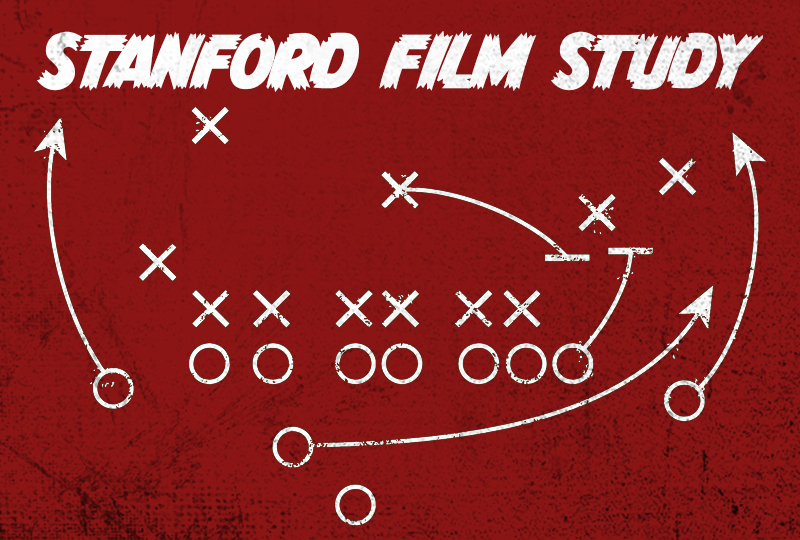Only five games into the Troy Taylor era, it is evident to Stanford football fans that the offense was completely remodeled. The designed quarterback run is now a greater part of Stanford’s offense than anytime before in the last 15 years.
This edition of Stanford Film Study will review one of Taylor’s most used run concepts: the pin and pull. The concept attempts to get lead blockers out on perimeter runs, where it is much easier for bigger lineman to cover linebackers.
How does the pin and pull work?
During pin and pull runs, some of the offensive line will perform down blocks, or blocks that attempt to push defenders away from the play side. Other defenders will pull towards the play side and will either kick out defenders on the perimeter or advance to the second-level to cover linebackers. Whether a lineman performs a down block or pulls play side depends on whether there is a defender in the backside gap of the defender.
Usually if there is one, the offensive lineman will have to block down, whereas in their absence, the lineman will pull. At other times, if a coach wants to get one of his more mobile lineman out on the perimeter, another offensive lineman can perform a cutoff block even if he does not have inside leverage. In pin and pull runs, there is usually two pulling lineman, with the first kicking out defenders on the perimeter and the second taking on defenders at the second-level.
Stanford runs the pin and pull with the quarterback and standard half-back runs. These are typically run out of 11 and 21 personnel. One example of the play is Stanford’s first touchdown drive against Hawaii.
During first and goal, Taylor called a quarterback pin and pull run out of 21 personnel. Despite splitting out wide at the beginning of the play, senior tight end Benjamin Yurosek motioned towards a tight-split so that he could set the edge against Hawaii’s defensive end.
Junior guard Trevor Mayberry and senior center Levi Rogers pulled toward the playside, since they did not have any defenders in their backside gap. In addition to Mayberry and Rogers, senior running back EJ Smith also provides extra support as a lead blocker. Since Yurosek did a good job of setting the edge, Mayberry, Rogers and Smith advanced to the second-level to find defenders. Smith took on the outside linebackers, Mayberry plastered the inside linebackers, while Rogers covered up the safety. The blocking allowed Daniels to scamper to the one-yard line, which eventually led to an easy touchdown run by Smith.

Looking forward, it is apparent that Taylor will continue to use pin and pull throughout his tenure at Stanford. However, the effectiveness of the scheme will depend on whether Stanford’s offensive line is athletic enough to find and swallow up Power-Five linebackers. Up next, the Cardinal will take on the Colorado Buffaloes at 7:30 p.m. on Friday, Oct. 13.
